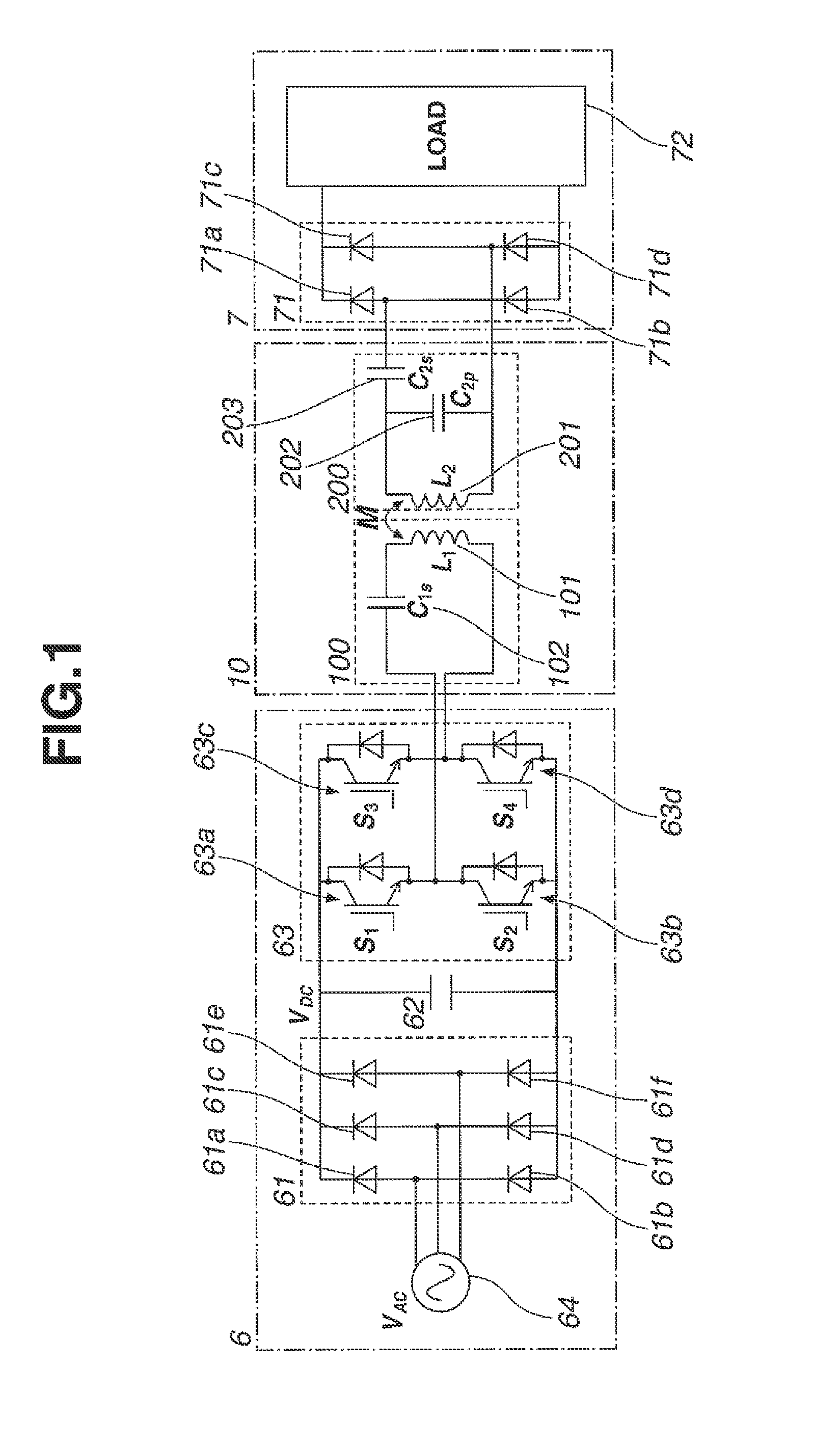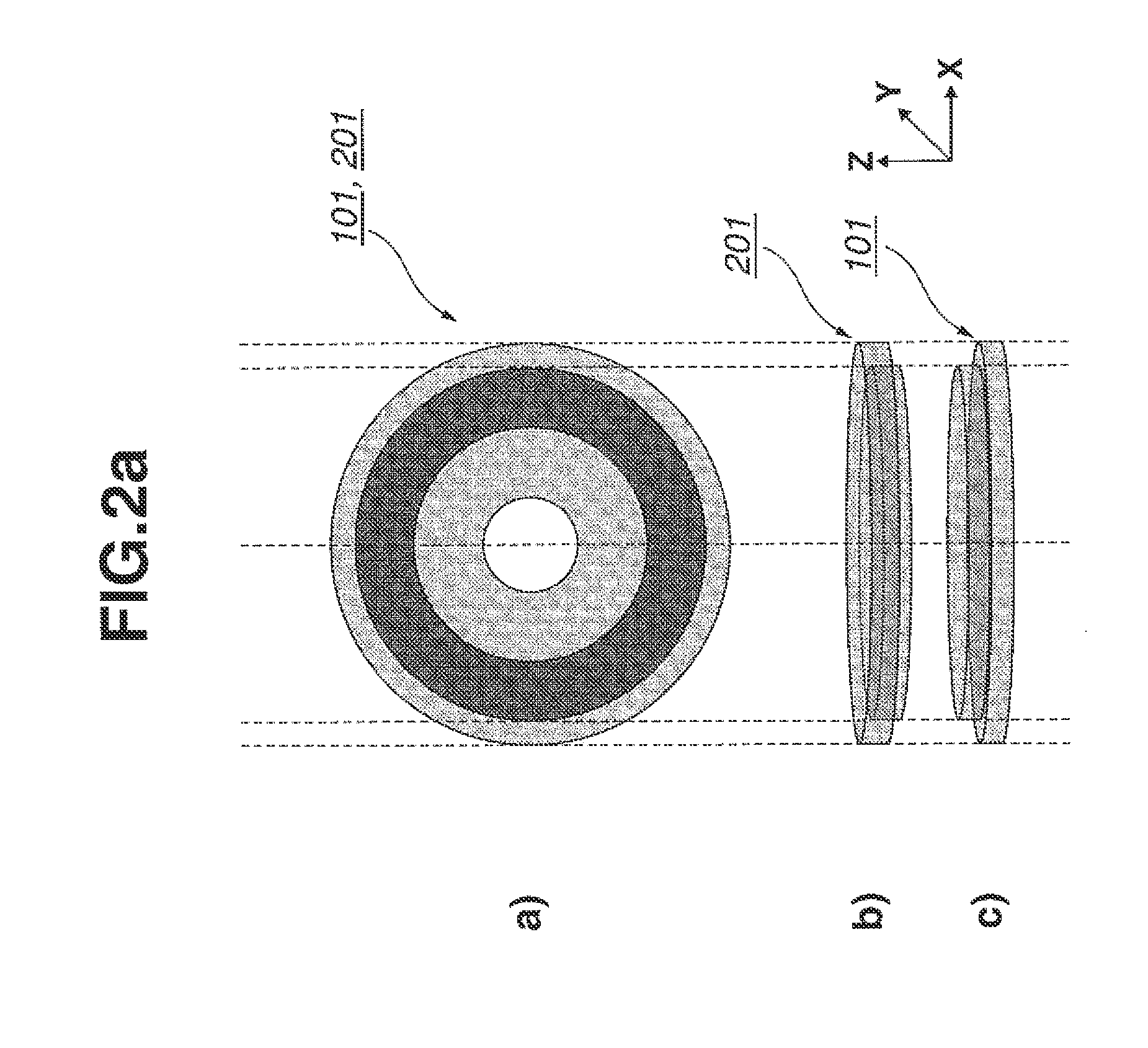Non-contact power supply device
a power supply device and non-contact technology, applied in the direction of charging stations, electric vehicle charging technology, transportation and packaging, etc., can solve the problems of coupling coefficient and power factor reduction, and achieve the effect of suppressing the reduction of a power factor
- Summary
- Abstract
- Description
- Claims
- Application Information
AI Technical Summary
Benefits of technology
Problems solved by technology
Method used
Image
Examples
first preferred embodiment
[0045]As an example of a non-contact power supply device in the preferred embodiment, the non-contact power supply device used together with a vehicle battery and a power load of an electric automotive vehicle or so forth will be described below.
[0046]FIG. 1 shows an electrical circuit diagram of a non-contact power supply device in a first preferred embodiment. The non-contact power supply device in this embodiment includes: a high-frequency alternating current power supply 6; a non-contact (or contactless) power supply section 10 performing a non-contact (contactless) power supply for an electric power outputted from high-frequency alternating current power supply 6; and a load section 7 to which an electric power is supplied by means of non-contact power supply section 10.
[0047]High-frequency alternating current power supply 6 includes: a three-phase alternating current power supply 64; a rectifier 61 rectifying a three-phase alternating current into a direct current; and a volta...
second preferred embodiments
[0085]FIG. 18(a) shows an absolute value characteristic of the impedance (Z1) of the non-contact power supply section of the non-contact power supply device related to a second preferred embodiment according to the present invention. FIG. 18(b) shows another absolute value characteristic of the impedance (Z2) thereof. A difference point of the second embodiment from the first embodiment is that the resonance frequency (f2) is set within a range of a half-value width of the resonance frequency (f1). The other structures of the second embodiment are the same as those of the first embodiment. Thus, the description of the first embodiment is appropriately applied to the description of the second embodiment.
[0086]As shown in FIG. 18 (a), the fundamental wave frequency (f0) of alternating current power supply 64 is set in the proximity of resonance frequency (f1) at which the minimal value of impendance (Z1) is provided. Δf denotes a half-value width of the frequency (f1). Suppose that an...
third preferred embodiment
[0103]FIG. 23 is a circuit diagram representing an equivalent circuit of the non-contact power supply section of the non-contact power supply device in a third preferred embodiment according to the present invention. The difference point of the third embodiment from the first embodiment is that, according to the characteristic of a zero (point) of the input impedance (Zin), the circuit structure of the non-contact power supply device is prescribed. The other structures in this embodiment is the same as those in the first embodiment. Hence, the description of the first and second embodiments is appropriately applied to the description of the third embodiment).
[0104]As shown in FIG. 23, a resistor (R) as an equivalent load resistance of load section 7 is connected to the output side of non-contact power supply section 10, Then, on a basis of the circuit shown in FIG. 23, the impedance characteristic (Zin) viewed from the output side of high-frequency alternating current power supply 6...
PUM
 Login to View More
Login to View More Abstract
Description
Claims
Application Information
 Login to View More
Login to View More - R&D
- Intellectual Property
- Life Sciences
- Materials
- Tech Scout
- Unparalleled Data Quality
- Higher Quality Content
- 60% Fewer Hallucinations
Browse by: Latest US Patents, China's latest patents, Technical Efficacy Thesaurus, Application Domain, Technology Topic, Popular Technical Reports.
© 2025 PatSnap. All rights reserved.Legal|Privacy policy|Modern Slavery Act Transparency Statement|Sitemap|About US| Contact US: help@patsnap.com



